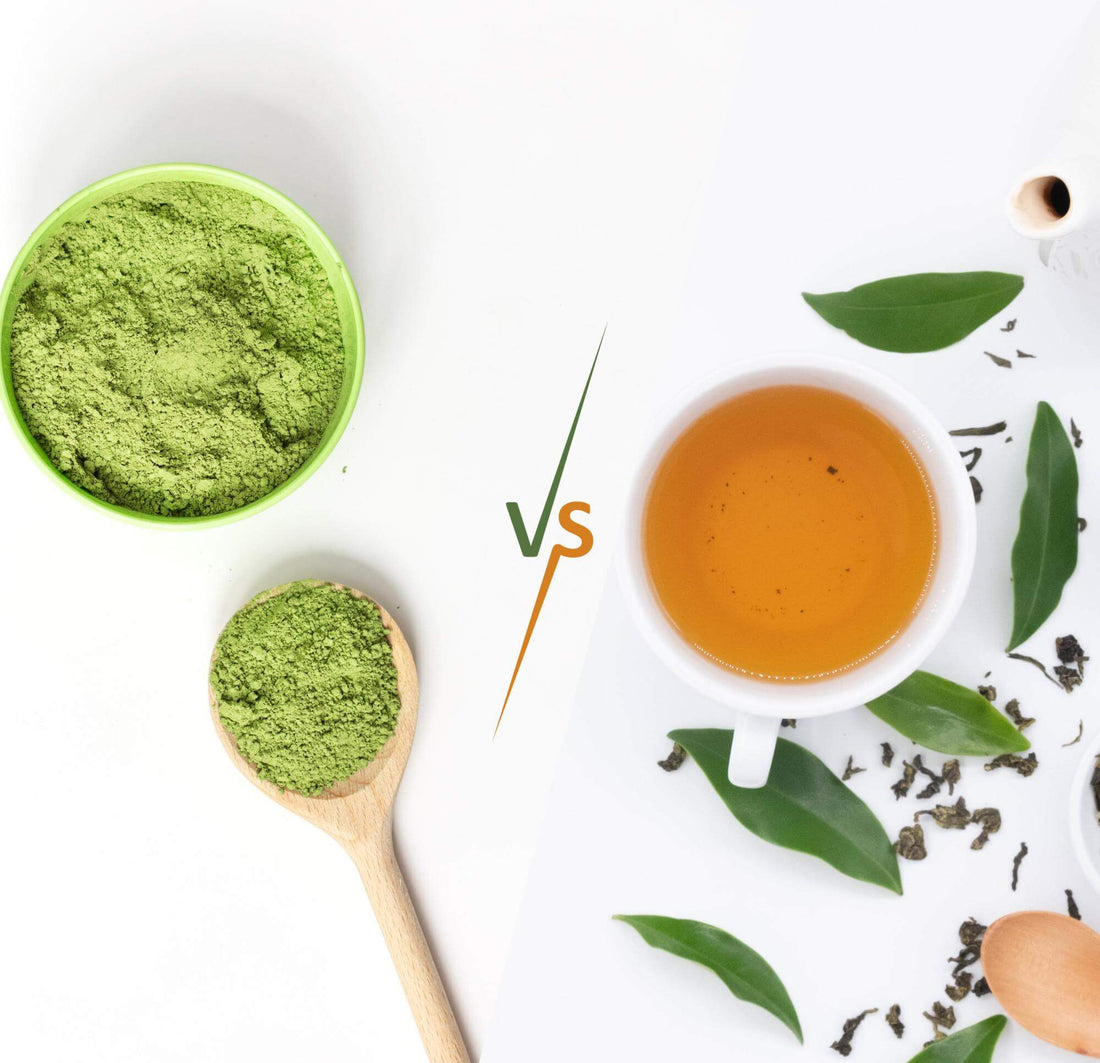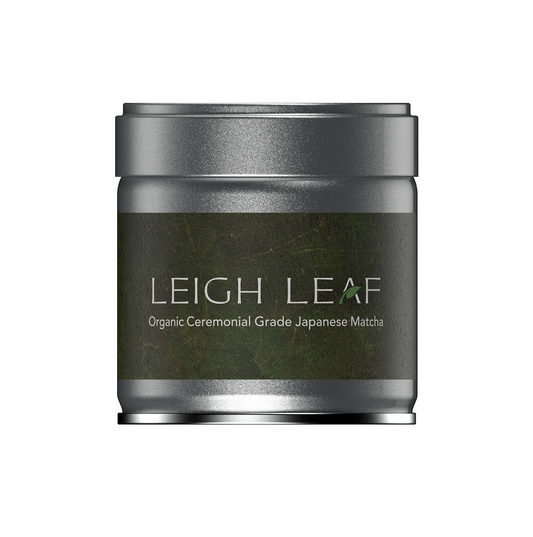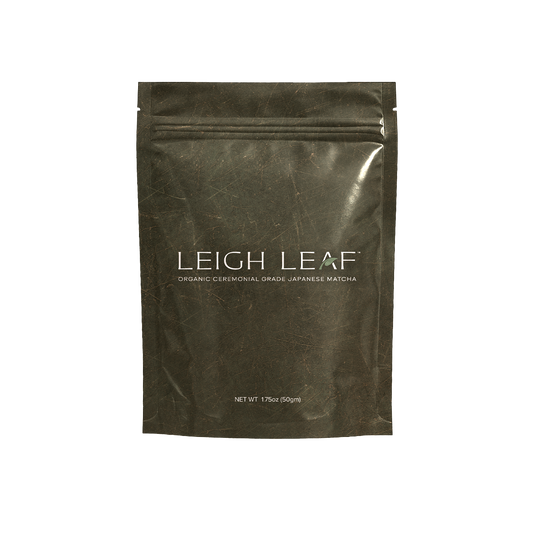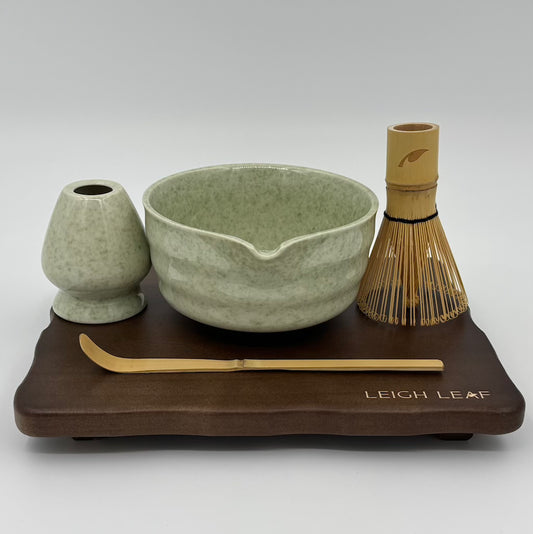
What Is the Difference Between Matcha and Green Tea
Share
If you've ever strolled through the aisles of a tea shop or perused the menu at a trendy cafe, you've likely encountered the intriguing duo of Matcha and Green Tea. These two beverages, though sharing a common origin in the leaves of the Camellia sinensis plant, are as distinct as night and day. Join us on a flavorful journey as we explore the vibrant world of matcha and green tea, dissecting their differences, histories, flavors, and preparation methods.
Table of content
What is Green Tea?
Let's start with the basics. Green tea, a beloved beverage worldwide, is a type of tea that is predominantly unoxidized. This means that the leaves used to make green tea are plucked and then immediately subjected to heat, often through steaming or pan-firing, to halt the oxidation process. It is this preservation of the natural green color of the leaves that gives green tea its name.
Green tea comes in various forms and flavors, with each type having its own unique profile. For instance, Japanese green teas like Sencha and Gyokuro offer grassy and vegetal notes, while Chinese green teas like Dragonwell (Longjing) have a nuttier and more complex flavor.

What is Matcha?
Matcha, on the other hand, is a powdered green tea that is renowned for its vibrant green hue and unique preparation method. Matcha involves consuming the whole tea leaf instead of merely steeping and discarding the leaves.
The production of Organic Matcha starts with shade-grown tea leaves, usually for about three weeks before harvest. The shading process enhances the chlorophyll content in the leaves, giving them an intense green color and a distinct flavor. A frothy, velvety beverage is created by whisking the powdered leaves into hot water after they've been dried and ground into a fine powder.
Flavor of Matcha Tea vs. Green Tea
Now, let's delve into the heart of the matter—the flavor. Both matcha and green tea offer a world of flavors, but they are distinctly different.
Green Tea: Different types and origins of green tea have different flavors. The taste of green tea is generally fresh, grassy, and slightly astringent. The aroma can be vegetal or floral, with hints of seaweed, toasted grains, or even citrus notes, depending on the specific tea.
Matcha Tea: Matcha, with its unique preparation, presents a flavor profile that is both bold and rich. It boasts an unmistakable taste, often described as grassy or spinach-like. The umami notes are prominent, creating a savory undertone that sets matcha apart from other green teas. Its texture is creamy and frothy, making each sip a luxurious experience.
Matcha or green tea depends largely on your palate when it comes to flavor. If you enjoy a more robust, umami-rich experience, matcha might be your cup of tea. If you prefer a milder, more traditional tea taste, green tea could be your go-to.

History of Matcha Tea vs. Green Tea
The history of matcha and green tea is essential to understanding their differences.
Green Tea: Green tea has a storied past that dates back over 4,000 years, primarily originating in China. Since the Tang Dynasty (7th-10th centuries), it has become an integral part of Japanese culture. Since ancient times, green tea has been revered for its health benefits.
Matcha Tea: Matcha has a more recent history, dating back to the Song Dynasty in China during the 12th century. Zen Buddhist monks brought it to Japan, where it was appreciated for its meditative properties. During the Japanese tea ceremony (Chanoyu), Matcha evolved into a symbol of refinement and tranquility.
Cultivation of Matcha Tea vs. Green Tea
Green Tea and Matcha begin their journeys in the same fields, but their cultivation differs greatly.
Green Tea: Green tea leaves are generally grown in full sunlight. The tea plants are pruned to allow the leaves to receive ample sunlight, promoting photosynthesis and the development of distinct flavors. The leaves are plucked during various harvest seasons, with the first flush (the earliest leaves of the season) considered the most prized.
Matcha Tea: Matcha's unique flavor and vibrant green color are achieved through a meticulous process known as shading. Matcha tea plants are shaded from direct sunlight for several weeks before harvest. In turn, this stimulates the production of chlorophyll and amino acids in the leaves, which give Matcha its distinctive flavor and color. The leaves are then harvested and processed differently from green tea, culminating in the finely ground matcha powder.
Preparation of Matcha Tea vs. Green Tea
It is in the preparation of matcha and green tea that their differences truly shine through.
Green Tea: Making a cup of green tea is a relatively straightforward process. You steep the tea leaves in hot water, usually at temperatures between 175°F and 185°F (80°C and 85°C), for a couple of minutes. The steeped leaves are then discarded, and you enjoy the resulting liquid.
Matcha Tea: Preparing Matcha is an art form in itself. To make matcha, you need a bamboo whisk (chasen), a matcha bowl (chawan), and a bamboo scoop (chashaku). Pour a small amount of Matcha powder into a bowl, add hot water (usually around 175°F or 80°C), and stir, then whisk vigorously in a zigzag motion until a frothy layer forms on top. The entire process is ceremonial and requires precision and care. Visit Leigh Leaf to learn more about Matcha.
Experience the Difference Between Matcha and Green Tea
In conclusion, both Matcha and Green Tea offer a remarkable journey into the world of tea, each with its own unique characteristics, flavors, and history. Whether you prefer the bold, creamy richness of matcha or the subtle, grassy notes of green tea, your choice ultimately comes down to personal preference.
Green tea and matcha tea may share a common origin in the Camellia sinensis plant, but their paths diverge dramatically from the moment they are plucked. Green tea's varied flavors and long history make it a beloved classic, while matcha's intense, frothy experience and Zen-inspired history provide a unique alternative.
So, the next time you're at a tea shop pondering your options, remember that your choice is not merely between two beverages but between two distinct worlds of taste and tradition. Whether you sip on the bold green elixir of Matcha or the soothing, nuanced infusion of green tea, your tea-drinking experience will always be a captivating journey.
In the end, it's not a matter of which one is better—it's a matter of which one speaks to your heart and taste buds, offering a moment of tranquility and delight in every cup. Cheers to the world of matcha and green tea, where every sip tells a story steeped in history and flavor.




